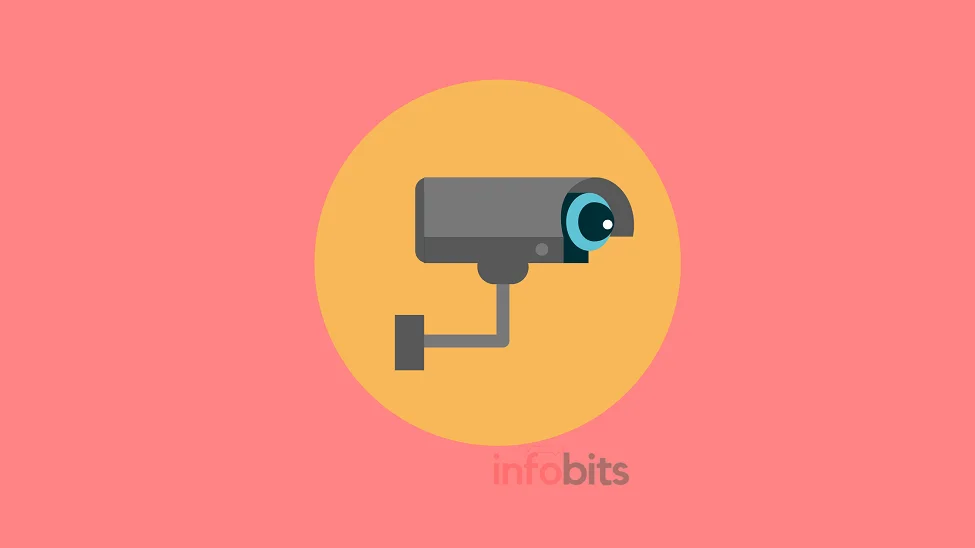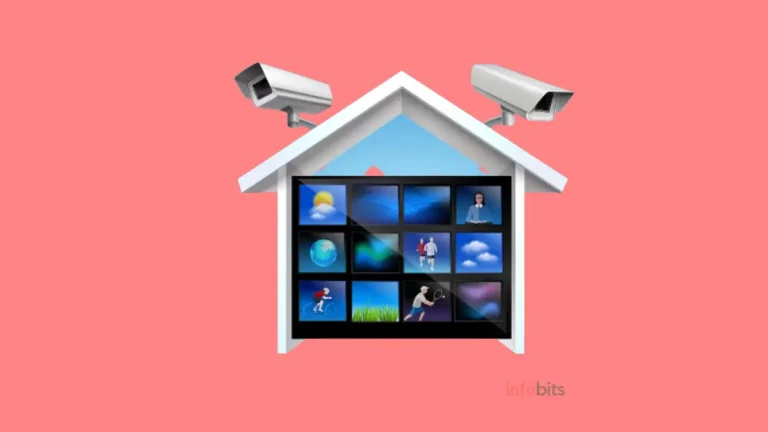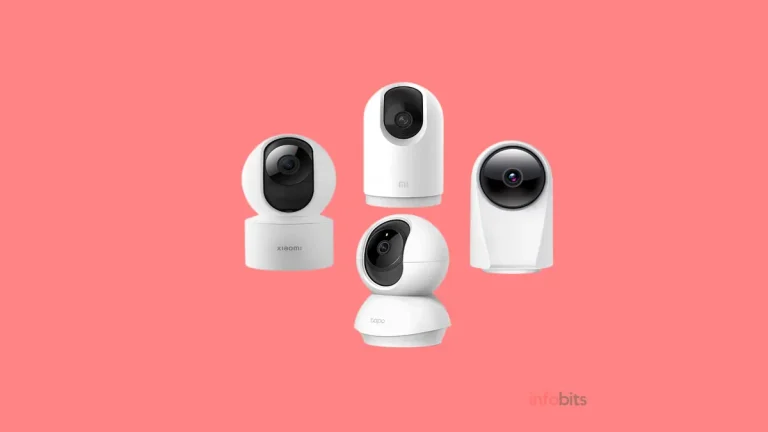How to Install a CCTV Camera at Home? Requirements for CCTV Camera Installation
CCTV video surveillance systems are now common in our country. Small and large CCTV units are widely used in small shops and even in houses.
From a security point of view installation of a security camera system is a necessary thing.
If there is a burglary in any shop, the police will ask ‘Why not put CCTV?’
It is also common to blame shopkeepers if they fail to fix a security camera system on their premises. In this article, we try to learn how to install a CCTV camera or a CCTV system.
Oh Sorry, some of our readers may wonder what is CCTV.
Let us explain it for the benefit of those people who hear about CCTV for the first time.
What Does CCTV Mean or What Is CCTV’s Full Form?
The full form of CCTV is Closed Circuit Television. That means it is an array of security cameras, a recording system (DVR), and a monitoring unit (monitor or a normal television).
There are no laws in our country that specifically state the location where CCTV can be installed or not.
As there is a strong link between CCTV and a person’s privacy, the indiscriminate use of cameras in public spaces is a topic of discussion.
Where Can Install a CCTV System?
We have no legal impediment to placing a CCTV camera on our private property for our security and protection.
However, we are not authorized to fix and operate security cameras in public places without any approval from the concerned authorities.
Although there is no specific rule for this, warning boards such as ” You are under CCTV surveillance ” are generally displayed wherever surveillance cameras are fitted.
This is not just aimed at deterring criminals from committing crimes. But also aims to avoid unintentional privacy breaches that are misunderstood by anyone else.
Such warning boards will help you to take the necessary precautions when you enter the CCTV surveillance area.
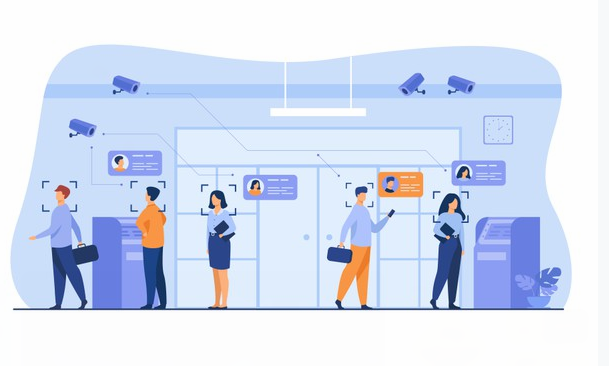
CCTV Installation
With the increase in demand, there is a surplus of agencies that install CCTV systems.
It is considered to be a very profitable business and hence a lot of fake security camera fixing agencies take advantage of the ignorance and misunderstanding of the customers and take huge margins.
Also, we would like to mention that there are plenty of genuine CCTV system providers who are also affected by those fake agencies.
So for those who are interested in doing and learning things on their own, let’s try to understand how to install a CCTV system at a minimal cost and things to consider when installing CCTV in your home or office.
It is also helpful to understand the CCTV basics for those who plan to install a security camera system by using a third-party installation team.
One can get acquainted with the video surveillance systems that are currently popular in our country and are easily available in the market.
What Are the Requirements for CCTV Camera Installation?
Security surveillance or CCTV surveillance system mainly consists of Cameras, DVRs, Power supplies, and monitors. This setup is only required when we have to use more than two cameras.
But if we have to cover the protection of a small area, especially in a small home, office, or shop no need to go for the complication of a large CCTV system.
In this case, we can meet our requirements by using one or two stand-alone cameras.
Nowadays different types of these cameras are available at very comparative prices. So let us understand the various methods or systems used in CCTV surveillance systems.
Types of CCTV Systems
1. Stand-alone IP Cameras
As the name indicates, it is a stand-alone camera. Each camera is connected to the Internet either directly or via a network switch.
It can be wired or wireless depending on the usage of a wired standalone camera or wireless standalone camera.
By using these types of stand-alone cameras remote viewing and recording are possible through mobile apps or computer software over the Internet.
Although remote viewing with IP cameras is possible in many ways, peer-to-peer viewing systems, which generally do not use servers, are now widely used.
Peer-to-peer viewing is the same technology as the torrents we are using. Each camera has a unique ID that connects directly to mobile phones or computers using this unique ID.
Alternatively, remote viewing is possible with the direct IP address of the camera.
This requires either a static IP address for the Internet connection (usually not available for home broadband connections) or third-party services such as No IP, which converts dynamic IP addresses into static IP addresses.
While Chinese brands are available with Remote Pan Twilight Zoom (PTZ) functions in the ₹3000-4000 price range
For cameras with similar features in D-Link, Sony, and Motorola brands, we have to pay five to ten times more than the Chinese models. So cheap Chinese cameras dominate this arena.
IP cameras are often used when only one or two cameras are needed. These small IP cameras can be used for a variety of purposes, from one-room shops to babysitting at home and caring for housekeepers, etc.
If the default passwords and user IDs of the IP cameras are not changed, they can be misused very easily.
Related: 8 Best CCTV Security Cameras for Home or Office in India
2. Cameras with Local Memory Card Storage
In particular, these are stand-alone cameras with only local storage and don’t have any network connection facility or remote storage facilities.
These cameras generally support a memory card of up to 128 GB.
These also have audio and video output. If required, the video can be connected to a TV via cables and monitored on an external monitor. Such cameras are available at comparatively low prices.
3. IP Cameras Installed at Various Locations
In this IP cameras are fixed in various locations. These cameras are then connected to a network video recorder (NVR) via cables and network switches.
In multi-story buildings, an advanced form of this system with multiple cameras is used.
The advanced system may include the IP cameras themselves or a hybrid system along with analog cameras would be more appropriate as per requirement.
4. Wi-Fi CCTV System
This system is a combination of WiFi IP cameras and an NVR.
The advantage of this system is no need for cabling which will reduce the installation time and cost, But the wireless cameras and NVR are comparatively expensive.
5. Hybrid System with Analog Cameras and Network Cameras
As mentioned in the title this system comprises analog cameras and IP cameras. Also, the DVR used in the system should support normal cameras and IP cameras.
6. Analogue Cameras Installed in Various Locations
This is the CCTV system connected to a digital video recorder via cables. This system is used when we are planning to surveillance a large area.
This is the most popular system and hence we will discuss this system in more detail.
The main devices included in this system are CCTV cameras, a DVR with a hard disk, a Power supply (SMPS), Cables and connectors, and a Monitor.
CCTV Camera Types
There are generally two CCTV camera types used for the CCTV system. One is a Dome camera, and the other is a Bullet camera.
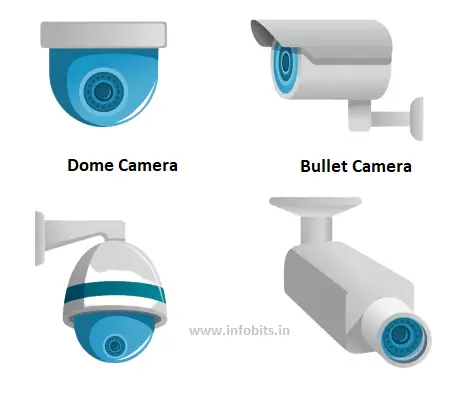
Dome cameras are cameras that can be mounted on the wall or the ceiling. Dome cameras are named for their dome-shaped structure.
Bullet cameras are mounted on a special axis in the shape of a tube. When it comes to price, dome cameras are cheaper than bullet cameras.
Focus and coverage areas are generally higher for bullet cameras than for dome cameras. Dome cameras are commonly used for indoor coverage and bullet cameras for outdoor coverage.
Of course, not all bullet cameras are suitable for outdoor use in rain and sunlight. So be sure to choose IP68 standard bullet cameras for this kind of use.
There are also Pan Twilt Zoom (PTZ) cameras that are not commonly used.
Cameras with microphones are also available to help record sound.
Most of the cameras available in the market now have night vision features. Nothing needs to be done additionally for this purpose.
The price varies depending on the megapixel rating of the cameras. Usually, 2-megapixel cameras are the most commonly installed.
Digital Video Recorder(DVR)
The Digital Video Recorder (DVR) is the core of the CCTV system. All cameras are connected to the DVR by special type cables.
DVR is a small computer with its operating system. It has a mouse and monitor attachment and sockets for connecting cameras.
DVRs are marketed based on the number of channels (cameras) they can handle. The most basic model is a 4-channel DVR. Up to 4 cameras can be connected to it.
If you want to connect five cameras, 5-channel DVRs or 6-channel DVRs are not available in the market.
For that, you will have to buy the next available 8-channel DVRs. After 8 channels, there are generally available DVRs with 16 channels and 32 channels.
The most widely available models in India are Hikvision, CP Plus, Godrej, BPL, Sony, and iBall. HikVision and CP Plus are popularly used DVRs.
Notice that there are no major price variations between 4-channel DVRs and 8-channel DVRs. Select the DVR Depending on how many cameras can be attached to each channel and the type of recording.
DVRs can capture 1080P videos that are more costly than 720P DVRs.
Both DVR models of the leading companies on the market will have network ports to link to the internet and will have an operating system configuration accordingly.
There’s also a category called Wireless DVRs. It’s used for the connection of wireless cameras.
Due to the small distance coverage between the cameras and the DVR, these DVRs are not commonly used and are not available on the market by leading companies. But they are freely available on Chinese portals.
SMPS
It is used to supply the 12-volt DC power needed to operate the cameras.
The current rating of the SMPS often varies depending on the number of channels used.
Cable
The cable is available in 90-meter bundles. Loose cables can also be purchased from the stores.
This cable consists of a bunch of shielded cables for connecting the output of the camera, a positive and negative cable for a 12-volt power supply, and wires for connecting the audio.
The camera cable is often a shielded cable to prevent degradation of the video signal.
Often go for a high-quality cable that prevents the distortion of the videos.
The power supply cable has a red wire as a positive of the power supply and a black or blue wire as a negative of the power supply.
Connectors
Two main types of connectors are needed for CCTV wiring.
One is the BNC/RCA connectors for connecting the camera and the DC power connectors for connecting the power supply.
Cable Clips
Wiring is the most time-consuming and tedious phase in the CCTV installation process.
Even if you just pull the cables and roughly attach them, it’s still going to work, but it’s not good for visual appearance.
The wiring may be achieved with plastic cable clips through the corners of the ceiling or parallel to another wiring so that it doesn’t appear too dirty.
Hard Disc
Hard discs are not equipped with DVRs when we buy them. The hard disc must be purchased separately according to the required capacity.
You may purchase the necessary capacity of 1 TB, and 2 TB hard discs depending on how many days the data should be stored.
While there are variations between regular computer hard discs and Surveillance Media hard discs, due to the wide price gap and lack of market availability, standard hard discs are the most widely mounted on DVRs to reduce overall cost.
DVRs can set up recordings in several ways. 24-hour recording, recording only at certain times, recording only if there are any motions, etc. may be programmed for specific channels.
Needless to say, the motion sensor that has been activated for recording will store more days on the hard disc. The recording can be programmed to write the old data after specific days.
That is, when the hard disc is complete, new data is recorded at the top of the oldest data. Recording format, video quality, and frame per second are all factors that decide the size of the video being captured.
Four motion-detection cameras (in average noisy areas) use 15 to 25 GB of memory a day. If it’s a 24-hour continuous recording, it’s almost double that.
The most frequently observed frames are 30 frames per second. The resolution is 720P for 1-megapixel cameras and 1080P for 2-megapixel cameras.
There are a lot of online calculators available that offer results of different combinations use of frames per second, camera megapixels, and resolution.
Monitor
Ordinary computer monitors or LED TVs can be used for monitoring purposes. Video out connectors for analogue video output are not widely found on industry DVR models.
You can then continue to use a TV display only if the TV has VGA and HDMI ports. Or you can mount an additional VGA to the Video Converter.
Microphone
Generally speaking, the microphone is not connected to the CCTV system built, but those who need it can purchase the microphones separately and attach them to the appropriate position on each channel.
Microphones are available in the range of Rs 300 to Rs 1000. Only the DVR is required to have an audio card (in some DVRs, not all channels must be audio-supported).
CCTV System Assembly and Installation
Let us see how to assemble and install a CCTV camera system.
There will be at least a rough idea of how many cameras are needed and what type of camera should be used. The approximate cost of purchasing and installing a 4-channel system is given below.
On different e-commerce pages, a variety of CCTV assembly kits and CCTV camera sets are available. If you want, you can try out and pick the best CCTV kits on Amazon based on your budget.
All of these are available online exclusively as kits from the ₹ 10000 range. (If you don’t have an HD DVR, a 1-megapixel camera is sufficient and the price is much lower in that case).
The hard disk is going to cost an additional Rs 3,200. You can use either the TV you are currently using or a separate computer monitor as a monitor.
The DVR must be installed in a safe location. First, set up the cameras where necessary. Needless to say, this requires drill machines, wall plugs, and screws.
Connect the power supply and video cable to each camera and root to the location where the DVR is installed.
You may not have a hard disk installed on the DVR. Open the DVR cover fasten the hard disk to the specified position and connect the SATA cable and the power cable (many YouTube videos are available for reference).
Then connect the video cables to the specified video input connectors and the SMPS power supply for each camera. Some SMPSs have positive and negative terminal connectors for each channel to be connected separately.
In others, there is only one DC terminal, one positive, and one negative. At this point connect the positive wires of all the cameras to the positive and connect the negative wires to the negative.
Connect the mouse and monitor and turn on the DVR power. You will see the option to enter the username and password on the screen.
In most DVRs, the username will be admin and the password will be either admin or blank. This information could have been entered in their user manual. All of the menu options are self-explanatory.
All configuration videos of the very popular DVRs are available on YouTube, so there will be no difficulties in this regard.
As stated earlier, all major DVRs have P2P viewing capabilities for live camera viewing on mobile phones. To do this, connect your Internet router through the LAN cable to the DVR network port.
Many P2P camera mobile apps, including the one from HikeVision, can easily view all cameras by entering the unique DVR ID, username, and password. The settings for this are available in the DVR Network Setup menu.
The most important part of this is to enable P2P.
What’s the main security issue with such a peer-to-peer web view?
The main security issue with this peer-to-peer web view is that anyone can view the camera by randomly searching for DVR/camera codes.
As a primary security measure, it is, therefore, necessary to change the default DVR username and password. This allows remote viewing with cameras via web browsers and special software.
While the CCTV system has become ubiquitous all over the place, criminals have also been updated accordingly.
So it’s common to steal DVRs now, too. It is therefore imperative that the DVRs be secured in such a way that they cannot be stolen so quickly.
While Internet-connected video is a very secure way to record and store on cloud servers, it is virtually impossible due to the high recurring costs and the limited bandwidth of the Internet connection.
Although many cloud storage services are available from different companies, they may not be affordable.
Related: Is Digiboxx a good alternative for Google Drive or Dropbox?
If you have a good internet connection, you can set up a DVR to upload DVR motion detection alarm images and video clips to your computer connected to another location.
All you need to do is turn your computer into an FTP server and enter the information in the specified fields in the DVR network settings.
Since your Internet connection does not have a static IP address, you may need to use any services such as NO-IP to make the dynamic IP address static and forward the FTP port (21) to the Internet router.
Although technically a bit complicated, there are a lot of supporting videos and other information available on the internet so don’t despair.
Needless to say, you need an internet connection with a good bandwidth upload connection to the internet. A normal broadband connection is just enough for viewing.
No matter how careful you are, you need to think about taking a step further to catch the smart-tech thieves.
Destroy DVRs and cameras, cut off power supplies, disconnect from the Internet, install extra dummy cameras to prevent criminals from overrunning, attach pinhole stand-alone cameras to local storage, make sure you have the power to fix them, and so on.
Things to Consider When Installing CCTV Cameras at Home or Office
CCTV is becoming an essential component in both homes and workplaces. The expected outcome will not be reached if CCTV installation is not adequately planned.
It is also possible that CCTV installation companies will take advantage of the general public’s ignorance.
Let’s go through some things to bear in mind when installing them.
a) CCTV Camera
- Camera Placement: Determine ahead of time where the camera will be required. For interior installation, use dome cameras, and for direct rain and sun exposure, use bullet cameras with IP protection. Dome cameras have a wider field of view. Dome cameras are thus marginally superior for office or interior applications.
- Resolution of the Camera: CCTV cameras with resolutions ranging from 1 MP to 10 MP are now available. Always try to choose cameras with good resolution. because CCTV is what you employ for security and surveillance. This will assist you in obtaining better footage by picking cameras with higher resolution. Similarly, cameras with night vision and microphones are now attainable. Choose just those that meet your needs. Night vision cameras, for example, are unnecessary in a well-lit 24-hour shop. A microphone is also not required for cameras positioned at greater heights. As a result, you must choose the cameras after determining your requirements.
- Type of Camera to be used: Choose the best camera for your needs. A skilled specialist can assist you in installing an IP, analogue HD, or WiFi camera. Additionally, know what you want to do with those cameras ahead of time. For example, ANPR (automatic number-plate recognition) cameras can be used to record registration plates. Because standard cameras, no matter how clear, cannot detect the number of speeding vehicles.
- Avoid direct falling of light on camera: Take care not to set your camera in such a manner that direct light hits it. Because you won’t obtain clear images if the light strikes the camera directly.
- Place the camera at a proper distance from the area to be covered: It is preferable not to position the camera so that an object is directly closest to it because when the infrared is turned on in the camera when the light is low, the infrared rays will hit the object at a specific distance and reflect and focus only on that object, leaving the rest of the areas out of focus. You should not notice this if there is adequate light during the day. But if you turn on the infrared signals at night, you may not receive the intended result from your camera.
- Camera Fixing Height: CCTV cameras should not be installed higher than 12 feet. We can’t see a person’s face properly if the camera is fixed in a higher position. Similarly, avoid placing the cameras too low.
- Choose a suitable DVR or NVR: After determining the precise number of cameras, choose the DVR or NVR. 4 channels, 8 channels, 16 channels, and 32 channels are the most common options on the market. If you want to install additional cameras in the future, make sure you invest in a DVR or NVR.
b) Cabling
- Use quality cables: Make an effort to utilize high-quality cables. Consequently, while utilizing inexpensive, substandard cables may yield a small profit at first, it might harm the quality of your camera’s images. Also, they degrade quickly and cost more because the cable must be replaced again.
- Avoid cable jointing: Never use CCTV wires that are joined together. If joining, utilize male and female connections and appropriately insulate them.
- Use quality cable connectors: Ensure that high-quality cable connections are used to link cables at various components of the CCTV system and that the connected parts are well-insulated. It has been observed that the connections rust and claw in our climate. No matter how wonderful the camera is, if you don’t utilize high-quality connections and connectors, you’ll never get the full range of its capabilities.
c) DVR Installation and Programming
- Place the DVR/NVR in a proper air-ventilated area: CCTV camera system that does indeed operate 24 hours a day, seven days a week. As a result, ensure that there is enough air circulation in the areas where the DVR or NVR is installed. For this, small exhaust fans can be employed.
- Use a UPS or Inverter: Connecting the CCTV camera system to a UPS extends the life of this equipment. UPS should only be used to defend against accidental power outages to the system and never to extend power backup time. For power backup, an inverter is preferable.
- Use surveillance hard disks: While backing up data, employ surveillance hard drives rather than conventional computer hard disks. Surveillance hard disks are slightly more expensive than computer hard drives, but they endure longer.
- Seek expert advice to utilize the full functionality of the DVR/NVR: The majority of DVRs and NVRs on the market now have AI functionality. It is possible to operate the AI functions effectively and make your CCTV system more than simply a monitoring system but also a security alarm system by utilizing the services of a skilled expert. For example, we may utilize AI search to determine when customers visit your store or office the most and how many individuals were there on a certain date. Furthermore, if someone crosses a restricted line, an alarm and announcement may be generated automatically, and AI can also distinguish people and vehicles.
Frequently Asked Questions
CCTV works by the camera or cameras capturing a continuous sequence of pictures, which are then communicated by cable or wirelessly (depending on the system type) to the recording device and finally to the display monitor, allowing a person to view the sequence of images as video footage. They may also be able to zoom in and out and rotate 360 degrees, depending on the type of camera utilized.
DVRs, or Digital Video Recorders, are essentially electronic gadgets that aid CCTV security cameras. They enable the capturing of surveillance footage for later replay. Modern DVRs allow high-definition video streaming and are easily connected to PCs and laptops. They also provide mobile viewing and internet streaming via a cloud infrastructure.
If you found this article about how to install and things to consider when installing CCTV cameras at home or office helpful, please share it with your friends and relatives.
Subscribe to our free newsletter so that you will get similar articles and regular updates directly in your Email.
Also, consider following our Facebook and Twitter pages for regular updates.
You May Be Interested to Read
- What Distinguishes a GPS Tracker for Kids from Tracking with a Smartphone or Smartwatch?
- 8 Best CCTV Security Cameras for Homes or Offices in India
- How do you fix the “SIM not provisioned” error message?
- How can disable Ads in the MIUI of Xiaomi phones?
- How to Secure your WhatsApp Account and Chats?

